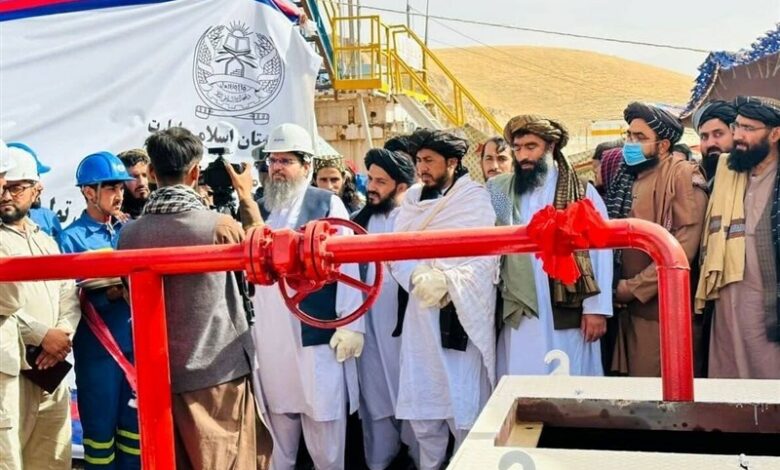Taliban strategies to increase income; From taxes and underground resources to foreign aid

| The background of the economy relying on foreign aid in Afghanistan has raised the question of how the Taliban will turn the economic cycle of this country with the existing restrictions. |
According to the regional office of Tasnim News Agency, the Afghanistan Development Review website wrote that more than two thirds of the national budget The previous system of Afghanistan was financed by foreign aid and during the last two decades, the then government of Afghanistan failed to compensate its national budget deficit through the collection of national revenues and exports.
Historical review shows that except During the reign of Amanullah Khan and the end of the reign of Zahir Shah, the rest of the Afghan governments have always relied on foreign aid to provide their national budget. to support its government through internal revenues. According to documented reports, the Taliban government has been able to raise Afghanistan’s tax and customs revenue to its highest level in decades. Last year, the Taliban government’s Ministry of Finance/Treasury announced that its total revenues In 1401, it was 193 billion and 912 million Afghanis (equivalent to about two billion and 236 million dollars). In addition, this year, the Taliban government has managed to exchange rate and the value of the Afghan currency in maintain a suitable situation.
Although after the Taliban took control of Afghanistan, every week the aid packages of 40 million dollars of the United Nations are delivered to the Central Bank of Afghanistan, but despite receiving this type of cash aid and Increasing tax collection, it seems that in the meantime, the revenues from the sale of coal and oil play a large and decisive role in the economy of the Taliban government.
The income of the Taliban government From the export of coal
While Afghanistan’s coal is domestically consumed, most of it is exported to Pakistan. The Taliban government does not have a direct contract with the government of Pakistan to export coal, but it has contracted the extraction of coal mines and its export with domestic businessmen, and receives a customs tariff from the export of this mineral.
At the end of the fiscal year 1401 The Ministry of Finance/Treasury of the Taliban announced that the revenue from the customs tariff for the export of Afghan coal to Pakistan has increased unprecedentedly. According to the ministry’s announcement, in the first 10 months of 1401, 2.7 million tons of coal were exported, which shows a threefold increase compared to the same time in 1400, when 948 thousand tons of coal were exported.
According to this official report, the coal export tariff income has reached 12 billion 143 million Afghanis from 1 billion 893 million Afghanis in 1400, which shows an increase of more than ten billion.
According to the announcement of the Ministry of Finance of the Taliban government, the income of each ton of coal in 1400 was about 1997 Afghanis, about 23 dollars, and in 1401, the Taliban received 4497 Afghanis, about 50 dollars, from the export of each ton of coal by increasing the tariff several times. which shows an increase of more than two times. We earned 26 billion afghanis
After the decision of the cabinet of the government of Pakistan to increase the import of cheap coal from Afghanistan, in return, the Ministry of Finance/Treasury of the Taliban also increased the customs duties by 30% per ton. With this decision, the amount of Afghanistan’s coal exports to Pakistan decreased. Finally, in the summer of 1402, the Ministry of Finance of the Taliban government announced that in order to increase the level of coal exports and create facilities for businessmen and encourage the country’s investors, it has reduced the privilege of exporting one ton of coal from 2,500 Afghanis to 2,200 Afghanis.
According to the latest official reports, the Taliban government earns $600,000 per day from the oil wells of Sarpul province alone. The Taliban governor in Sarpul province of Afghanistan announced on the first of December this year that the Taliban government earns $600,000 a day from extracting oil from Qashgari wells. According to this official of the Taliban government, 650 to 900 tons of oil are extracted from these wells daily and part of the income from these wells is spent on development projects. handed over the Amu Darya oil fields in Jawzjan and Faryab provinces to a Chinese company under a 25-year contract.
Taliban government’s income from various mining
In addition to the extraction of coal and oil mines in Amu Darya, the Taliban government has made significant efforts to extract Afghanistan’s mines in order to overcome Afghanistan’s economic problems and the effects of sanctions imposed by the West. .
Recently, the contract for the extraction of seven mines worth more than 6.5 billion dollars was signed with foreign and domestic companies in the presence of Mullah Abdul Ghani Baradar, the economic deputy of the Taliban prime minister. Gold mine in Takhar province, Aynak copper mine in Logar province, first, second, third and fourth blocks of Ghorian iron mine in Herat province and lead mine in Ghor province are included in this big contract. Afghanistan has been severely criticized by Taliban opponents, but the evidence shows that the revenues from the sale of these mines, especially coal and oil, play a large role in the economy of the Taliban government, including in infrastructure projects such as the Ghosh Tepe water channel and control exchange rate in Afghanistan.
end of message/
| Publisher | Tasnim News |


